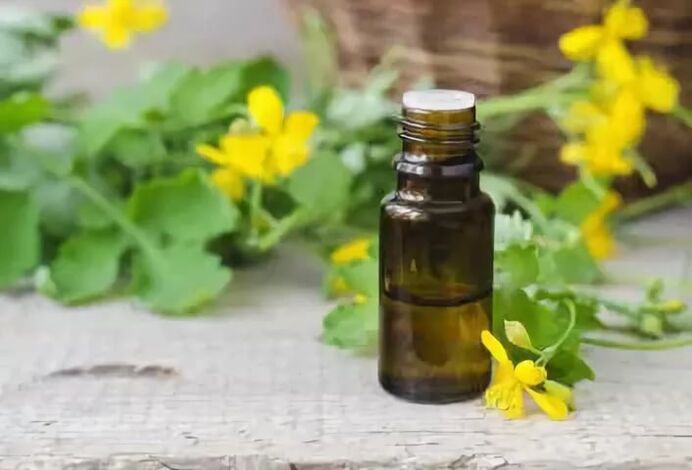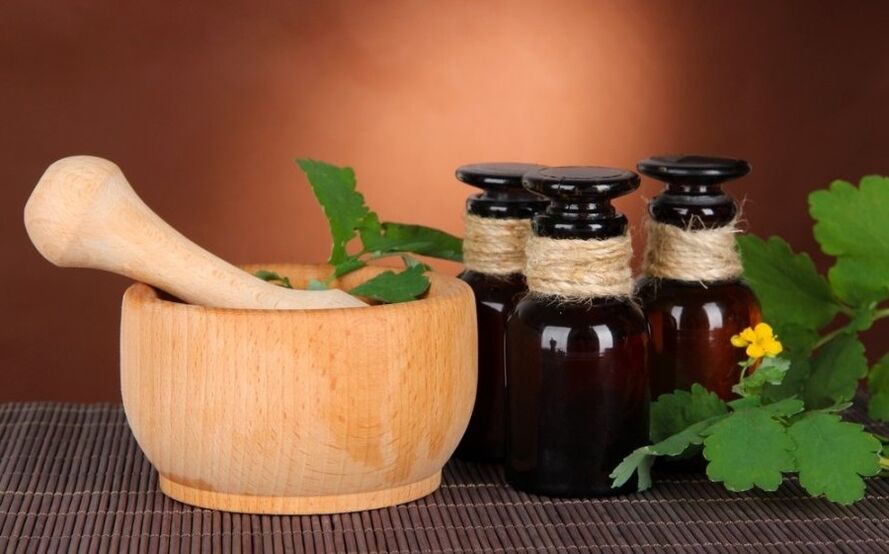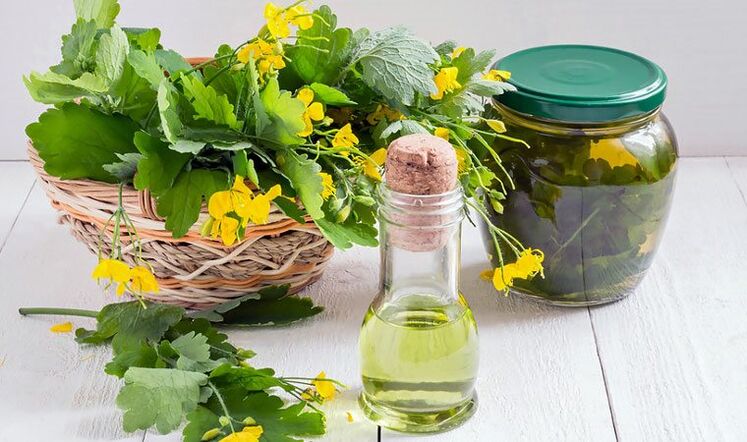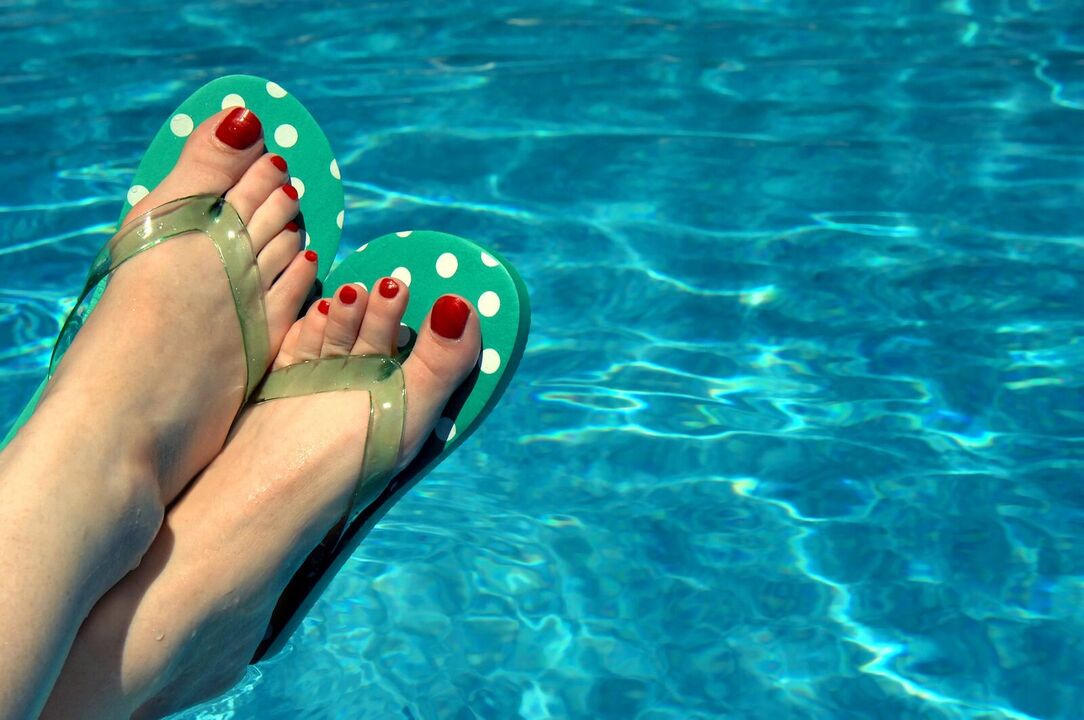
When the first signs of the disease are found, it is necessary to treat fungal diseases of the nails, as dealing with neglected diseases can be more difficult. In addition, the infection can spread to other nails, surrounding skin, and interdigital folds. If it is said that the disease is initially treated, it can be cured with folk remedies without drugs. Therefore, celandine from toenail fungus is considered a particularly effective remedy.
Fungal infections of superficial tissues
The fungi that live on the nails feed on the creatine in the plate. This can lead to broken and discolored nails.
It is tarnished, elastic, can thicken or thin, grow poorly, and be covered in waves. Most of the time, the disease affects toenails, as the damp, warm environment on the floors of shoes, saunas, tubs and swimming pools is beneficial for the fungus.
Many times, pathogens are resistant to many of the drugs that pharmacies give us for onychomycosis. As a result, treatment with these drugs does not produce the desired results and leads to a waste of money.
The active ingredients of many herbs do not cause fungal resistance, so they are more effective than synthetic preparations.
That's why various celandine-based body washes, creams, oils, and tinctures have been used to treat nails since ancient times, and many types of fungi are still not resistant.
Fungal infections are particularly effective when using celandine oil, as all the active ingredients remain in it as much as possible.
properties of celandine

Celandine contains about 20 alkaloids, as well as celandine, which slows the development of microorganisms that cause various forms of fungal diseases.
Due to the alkaloids, the reproduction of fungal infections is inhibited, as well as protozoa and bacteria that are resistant to many antibiotics.
In addition, the composition of the plant contains the following active substances:
- Tannin compounds;
- Phenolic and organic acids;
- a small amount of essential oils;
- Choline and histamine;
- carotene and vitamin C;
- enzymes;
- saponins;
- flavonoids.
Many alkaloids are more soluble in alcohol than enter aqueous compounds. Berberine, which gives plant sap its yellow color, dissolves only in hot water.
You should consult your doctor before starting to treat nail fungus with celandine, as the plant's alkaloids are toxic.
Of course, when used topically, they have no toxic effects on the body, but when ingested, they can lead to dangerous consequences.
In pharmacies, you can buy liquid celandine from nail fungus. It is only allowed in extreme cases because it contains concentrated alkali.
The tool destroys the cells of microorganisms (fungi and viruses) that have colonized them. This is why this medication must be used very carefully and only on the affected area of the nail.
Medicinal preparations of celandine
Before treating nail mycosis, it is necessary to understand the characteristics and effects of medicines based on this plant. Because of the low volatile content in celandine, essential oils are not made from celandine.
In cosmetology and pharmacology, oil extracts of the flowers of this medicinal plant are used.
Medicinal oil extracts contain almost complete FCS from this herb. This remedy is for external use only and requires no dilution.
The therapeutic effect can be explained by the cauterizing, antibacterial and keratolytic effects of the drug on the affected skin and stratum corneum.
Celandine oil extract moisturizes, softens and cleans the skin and cuticles, eliminating peeling, irritation and dryness.
This oil can cure nail fungus, but an allergy test must be done before use, as celandine can cause hives. To do this, drop the oil on the skin of the wrist and evaluate the results after a quarter of an hour.
If there is no itching, blisters, irritation, or redness, it can be used for treatment.
Celandine-based ointments and oils
Ointments and oils for foot fungus and celandine from horn can be prepared at home. To do this, do the following:
- You will need the upper parts of the shoots of this plant. They need to be cut and cleaned thoroughly.
- We wait until the grass is a little wilted, then grind and squeeze out the juice.
- Pour this juice into vegetable oil, which is sterilized by boiling in a water bath.
- The drug must be infused for an hour in the dark.
- Then pour everything into a dark glass bottle and soak for up to three weeks.
- During this period, the oil container must be shaken regularly.
- After this, the oil is filtered and used for disposal.
There is no need to collect celandine in the field, yard or forest. This plant can be grown in boxes on balconies. In addition, pharmacy hay is also suitable for making oil. In oil stick to the same as fresh stock.
To prepare the ointment, powdered hay and medical petroleum jelly are used.
Some herbalists claim that only fresh grass can help treat nail fungus. However, extracts from this plant have also been shown to have anti-inflammatory, analgesic, and cauterizing properties.
Treat nail fungus with celandine (oil and cream) as follows:
- In the evening we steam our legs. In the tub, you can add a little sparkling water and laundry soap.
- Thoroughly dry the affected area of the feet, nails, and interdigital folds with a towel. We cut off the regenerated edge of the nail and use a nail file to trim the softened affected area of the nail plate.
- Apply the oil or ointment to the painful area with a cotton swab or cotton pad.
- After that, we put plastic bags and socks on our feet.
- Let the agent act for ¾ hours. Afterwards, rinse the legs with water before bed and treat the affected nail plate with iodine.
Other Ways for Celandine
Celandine, which is used to treat nail fungus, is available in tincture form or as part of a combination therapy. Below we list the most effective recipes:
- After the treatment with hydrogen peroxide, the pure sap of the plant should be wiped with the diseased nail plate twice a day. After the first part of the juice on the nail has dried, repeat the process two more times. Treatment continues until recovery.
- A complex mixture based on celandine for the treatment of fungi. You will need 2 drops of oregano herbal juice and calendula tincture, 5 drops of pure celandine juice and 120 grams of water. This remedy is applied to affected nails with a cotton pad three times a day until recovery.
- Alcohol tinctures are prepared as follows: fresh plants are washed, dried and poured into vodka in a 1: 2 ratio. Soak for twelve days. After that, start the treatment with 5 drops on each nail, up to 20 drops. Treatment lasts up to two weeks.
- Celandine bath. You will need 150 grams of hay, which must be poured with boiling water (one and a half liters). The mixture should be soaked for 1/4 hour, then filtered and boiling water (0. 5 l) added to the soaking liquid. In this water, the legs are steamed for about 20 minutes. After removing the plate from the dead cells, rub the medicine prescribed by the doctor into it.
Many traditional healers recommend supplementing foot treatment with a soda celandine bath. For this, for 1000ml of water (hot) we need 30g of baking soda.
We steam the legs for 15 minutes, then carefully remove the affected softened area and apply the celandine remedy. We shower every day until recovery.
In addition, rubbing hydrogen peroxide into the affected cuticle and then post-treatment with a mixture of this medicinal plant's powder and camellia oil produces good results.
Treatment with the methods listed can take anywhere from 6 months to a year. This is the time for healthy nails to grow back.
During this period, pay attention to foot hygiene and disinfect shoes regularly to avoid re-infection. To treat shoes, you can use vinegar or special sprays.
Celandine Recipe

Celandine Herbs For Nail Fungus:
- Fresh leaves are crushed.
- Add a drop of tea tree oil.
- Apply the mixture to the affected nail and secure with plastic wrap.
- Remove the compress after 3 hours.
- You can apply up to 3 times per week.
Celandine grass for fungal treatment:
- Put the leaves of the plant in a pot and pour sunflower or olive oil to cover a few centimeters of grass.
- Store the mixture in the dark room for a few hours, then place the jar in a cool place for 2 weeks.
- Dip a cotton pad into the resulting oil and apply to the affected area.
- Cover your fingers with plastic wrap for 2 hours.
- The medicine is washed off and the feet are treated with antiseptics.
Contraindications
Before treating nail fungus, it is important to rule out contraindications. Pure celandine juice and tinctures are not acceptable in case of allergic reactions and hypersensitivity to herbal ingredients.
Absolute contraindications are the use of the drug during pregnancy and breastfeeding, as well as during childhood.
To apply celandine, you need to monitor the reaction of the skin. In case of severe irritation, congestion, rash, you need to give up this option for nail fungus.
Pure celandine juice is not recommended, so it must always be diluted with lukewarm water regardless of the recipe.
Celandine has a remarkable disinfecting effect, therefore, it kills all pathogenic microorganisms in a short time. You should consult a dermatologist before using a recipe with this poisonous plant. Your doctor will explain whether celandine can treat nail fungus, what are the contraindications and risks.
Measures to prevent nail fungus

You can protect yourself from fungus simply by following the hygiene rules and taking preventive measures in a timely manner.
- In all public places (beach, showers, changing rooms, swimming pools, spas, etc. ) we wear easy-to-clean slippers. Do not walk barefoot where there is a risk of infection!
- We don't wear other people's shoes (including party slippers - socks are best).
- We do not use other people's towels and nail accessories.
- After walking out of the bathroom, our feet were not on the normal (usually wet, not fresh for the first time) carpet, but on our own towels (allocated in advance for this purpose).
- Check your feet and nails regularly for signs of fungus. For the mildest symptoms (cracks/itching between fingers, changes in nail color, etc. ), we take action. That is, we buy ointments, specials/varnishes, etc.
- We try not to use tight and narrow shoes, as well as shoes made of poor quality materials.
- We often treat shoes from the inside with preservatives.
- To prevent sweaty feet, we use deodorant, talc, etc.
- We only use cotton socks. If we need to use tights/stockings (products made of synthetic fibers like nylon), we have to take them off, steam the legs, and process them at home.
- In hot weather we wear open shoes - for ventilation and free air exchange. Sweaty feet are a breeding ground for bacteria.
- We don't measure shoes in stores without socks/footprints - bare feet.
- We dry our feet after a shower, including the space between the toes - this is where the fungus starts.
- We don't allow cracks on our feet - we use moisturizers.
- Wash your feet with an antibacterial, mild soap.
- We use antifungal creams, powders or aerosols when there is a high risk of infection (for example, on vacation or in a swimming pool).
- If your shoes get wet, dry them thoroughly. We don't wear wet shoes/boots.
- We select specially verified salons for pedicure/manicure procedures.
- We don't allow nails to wring out, ingrown and deform - we take action in a timely manner.
























